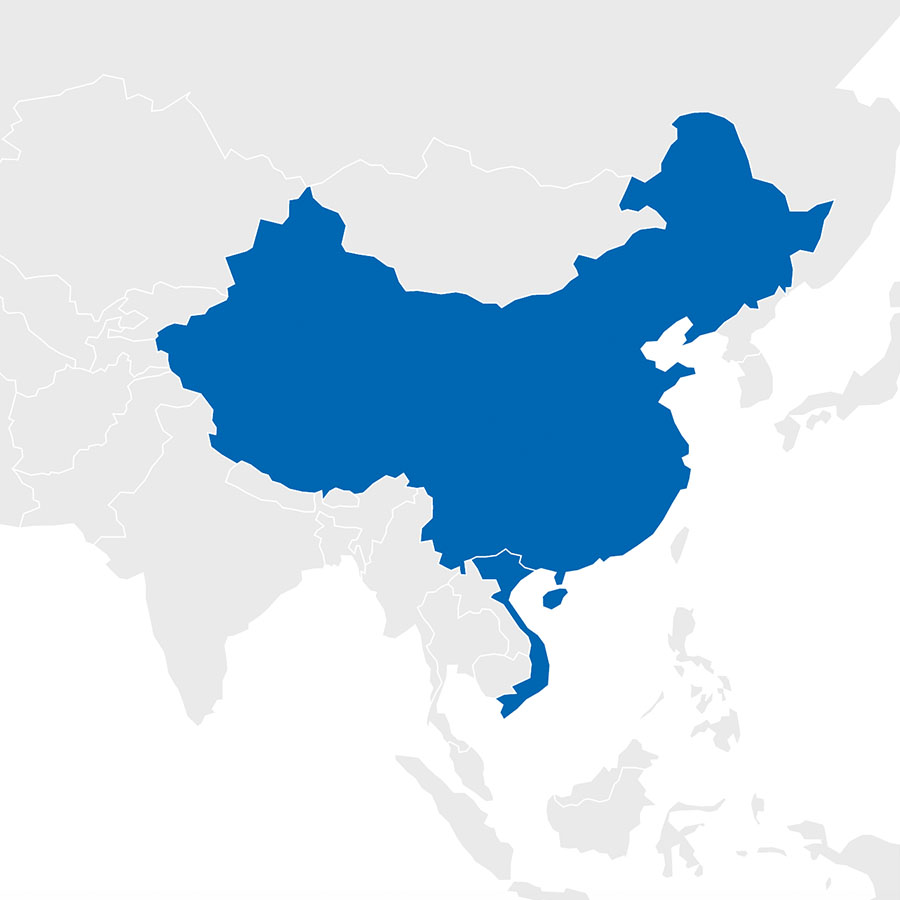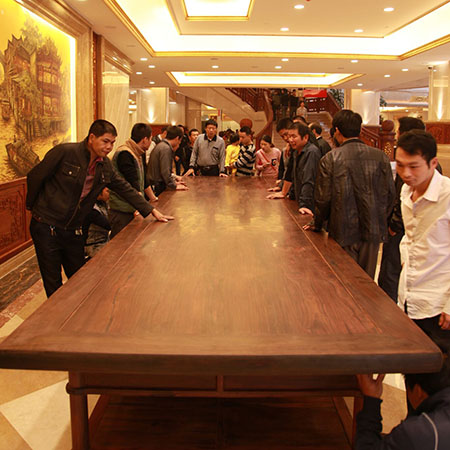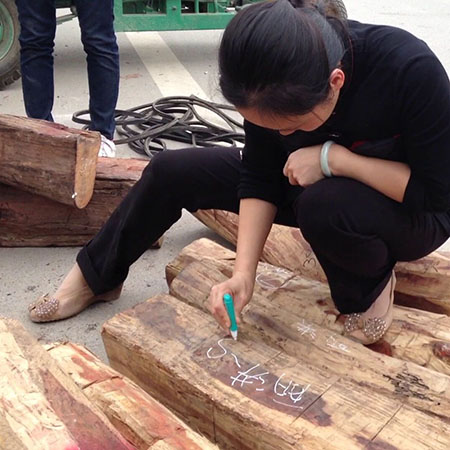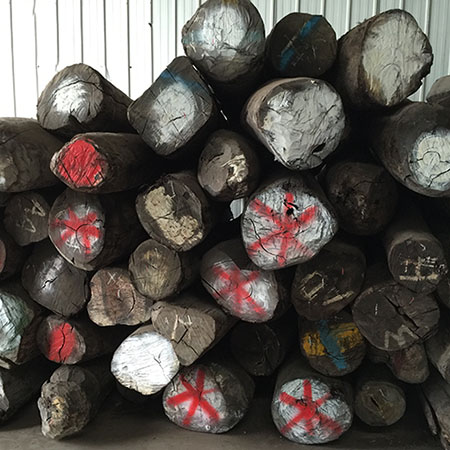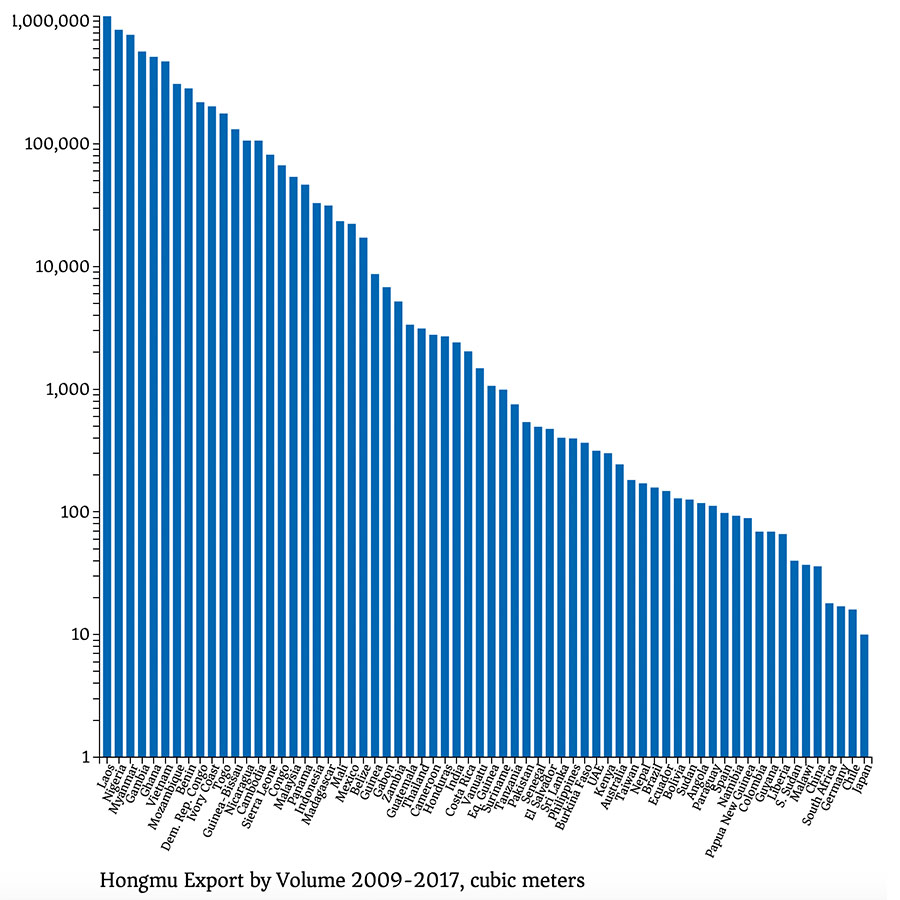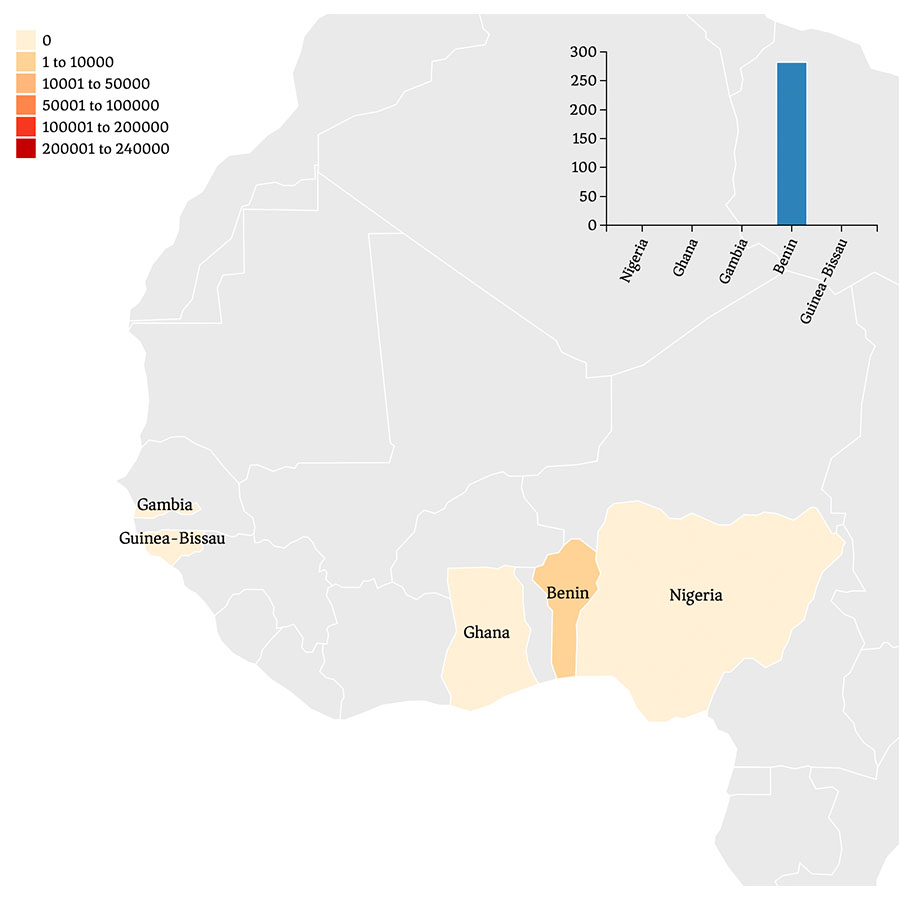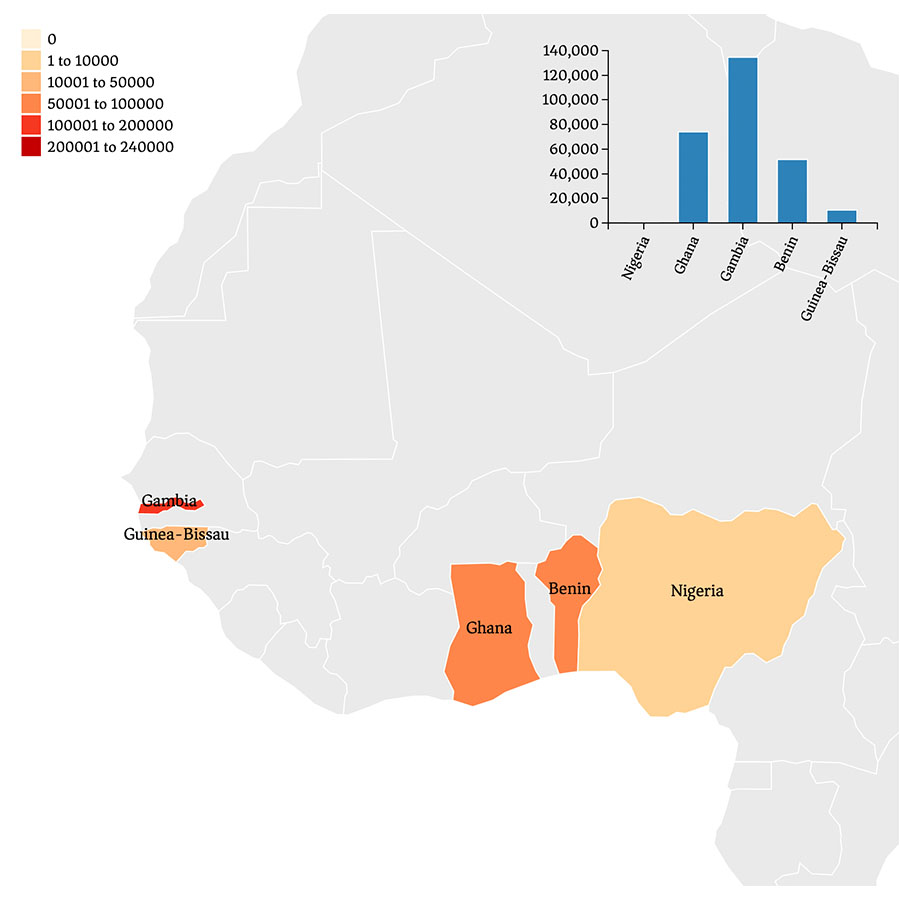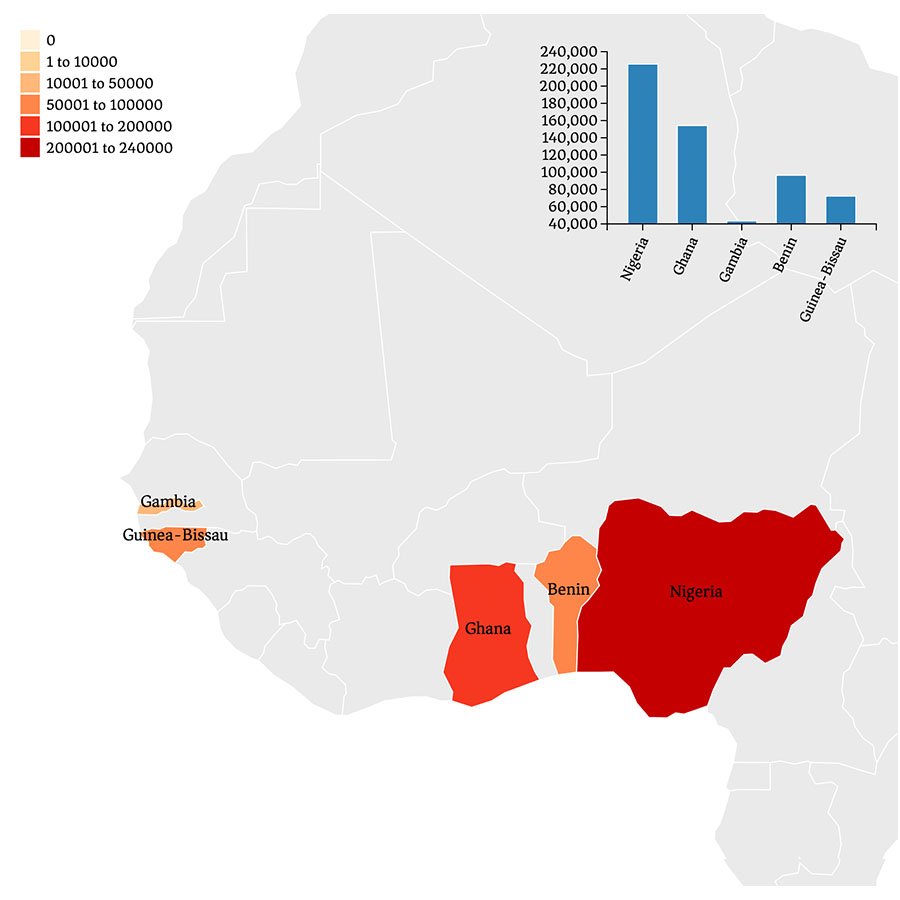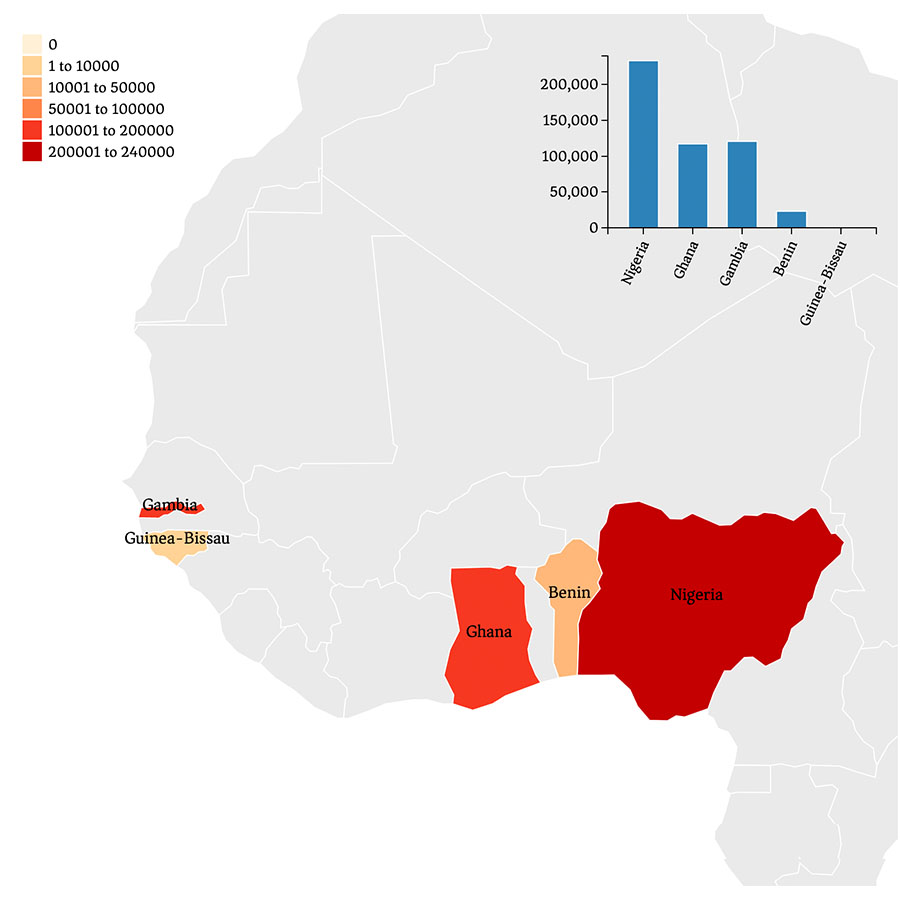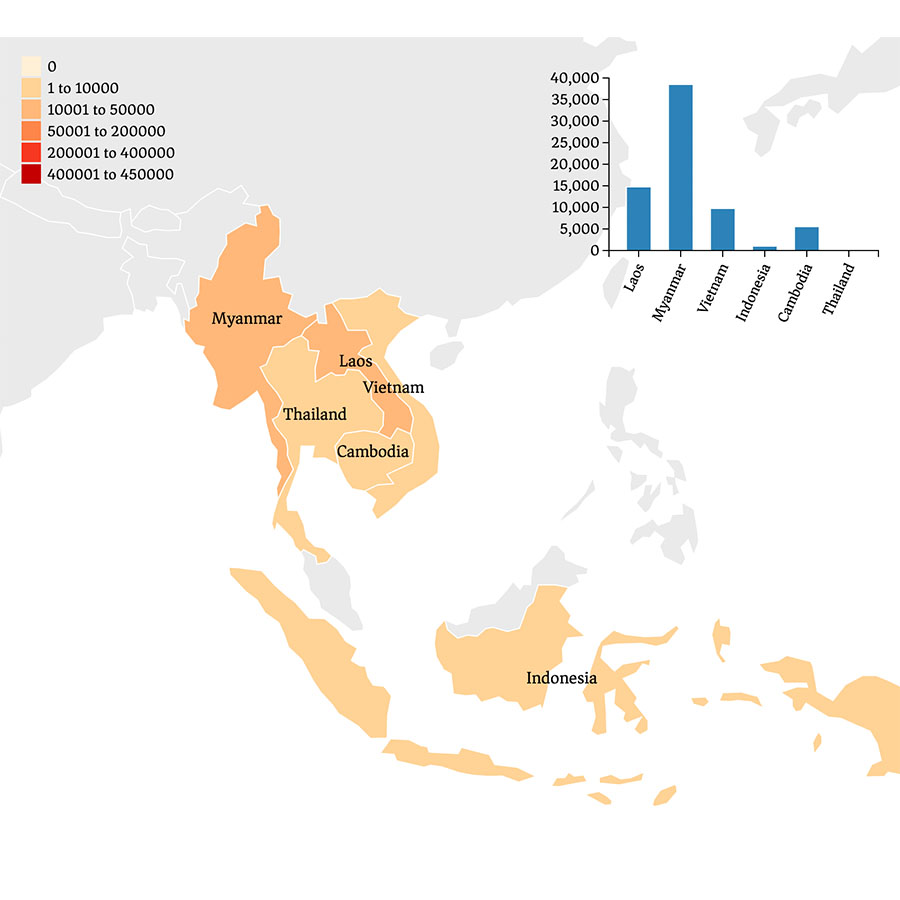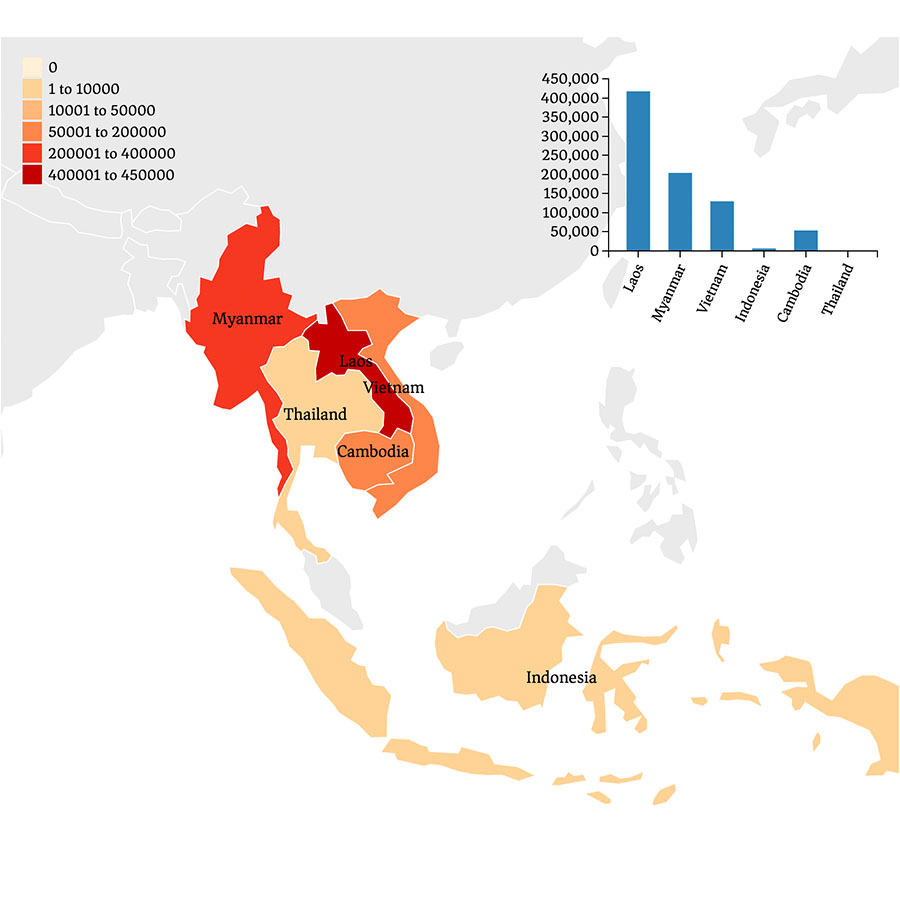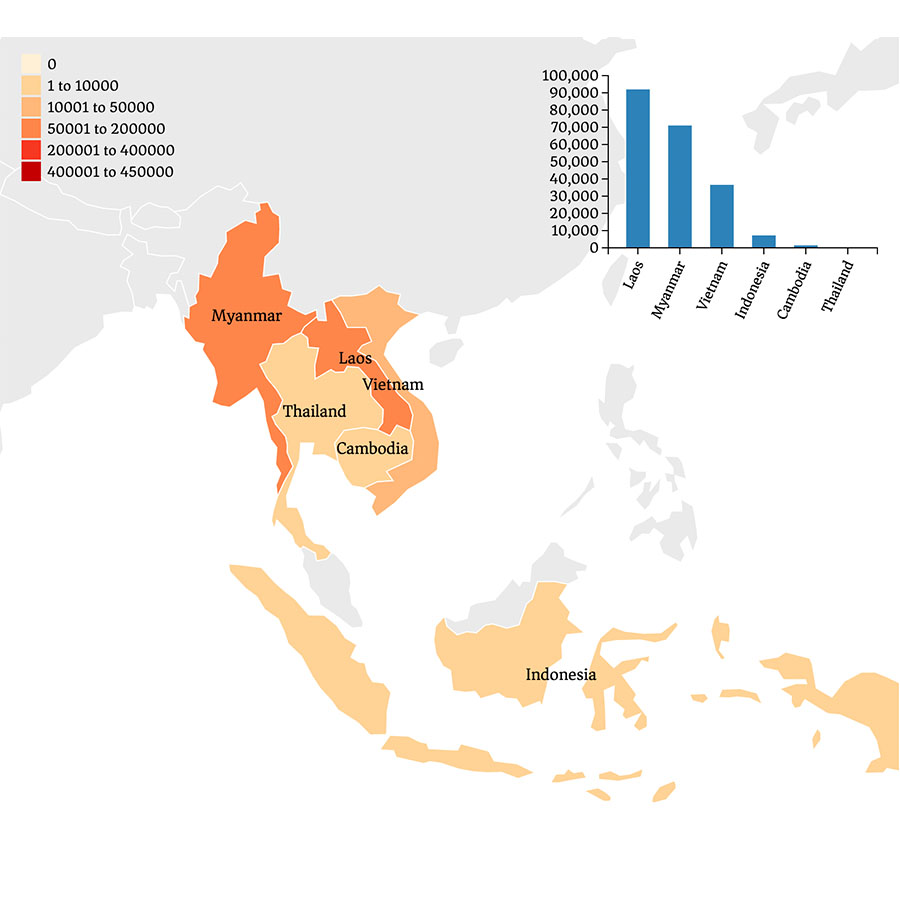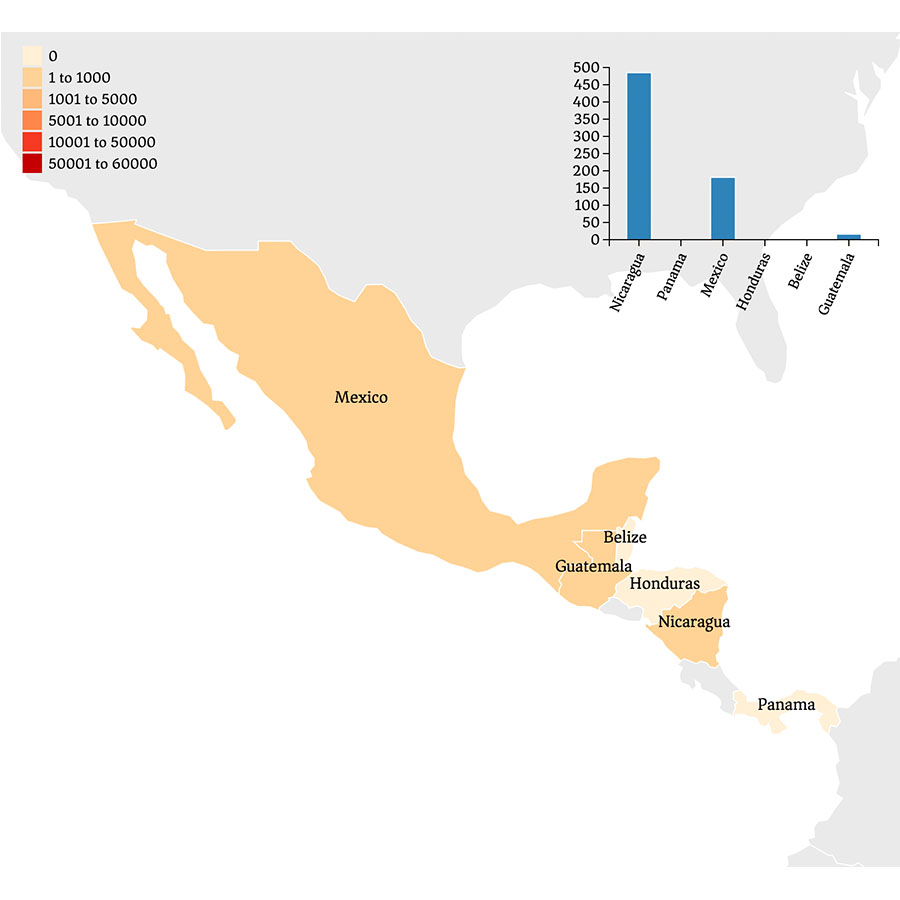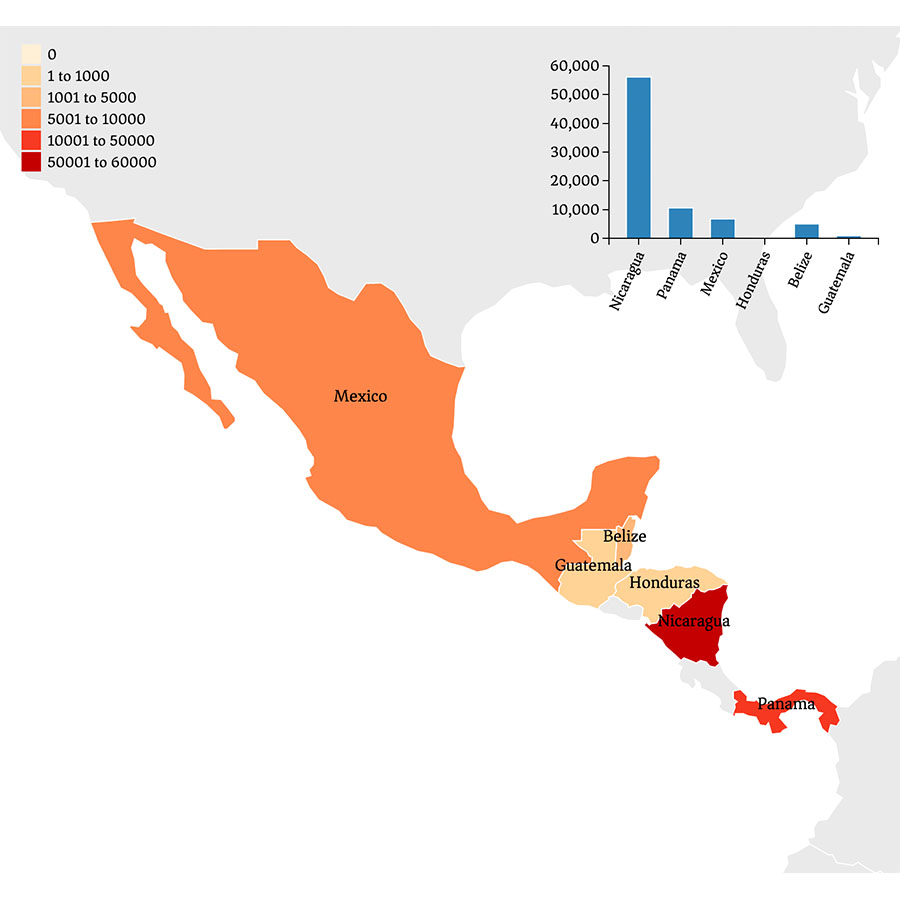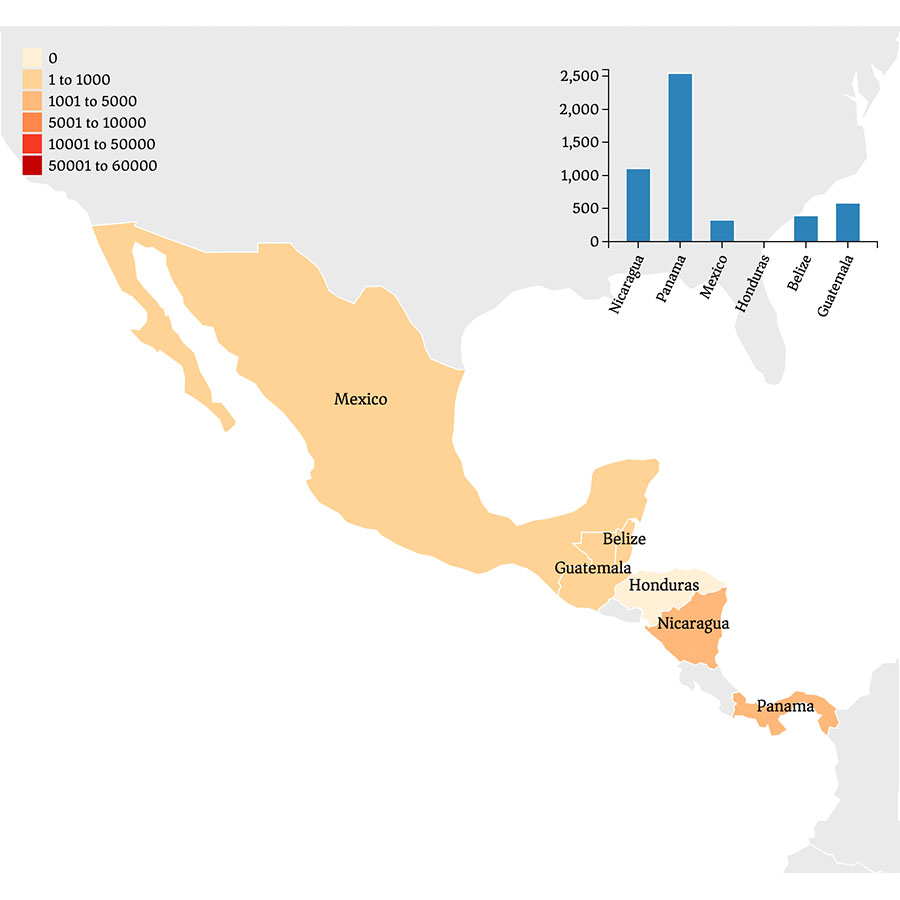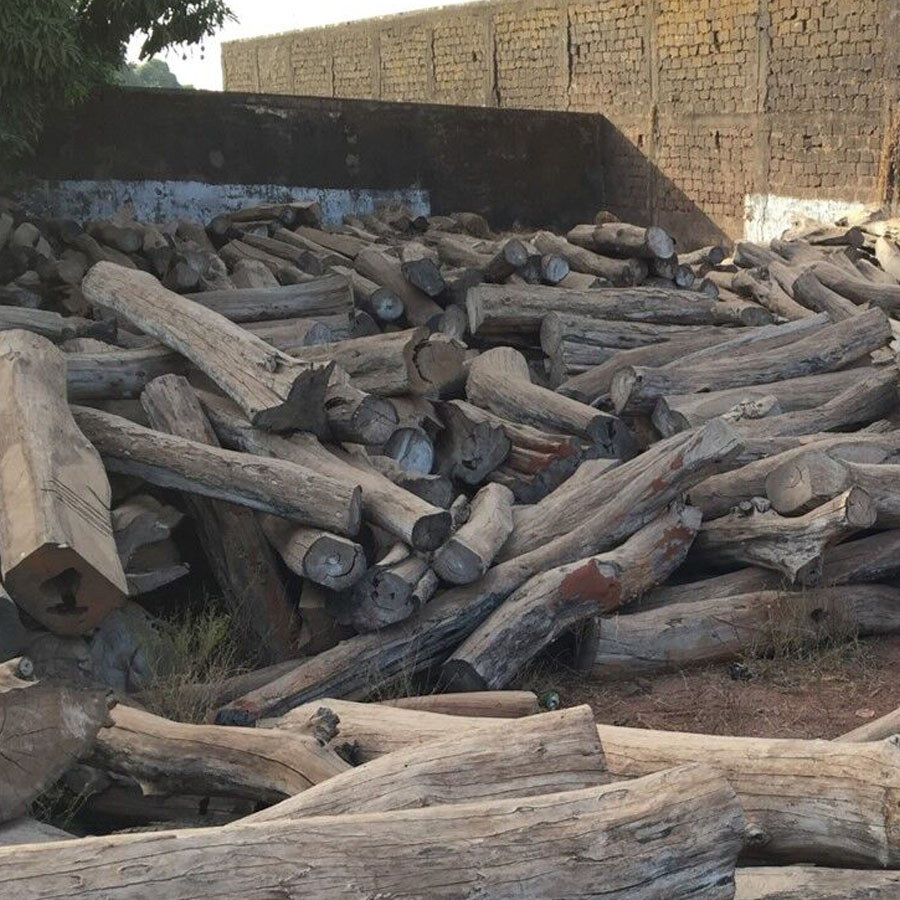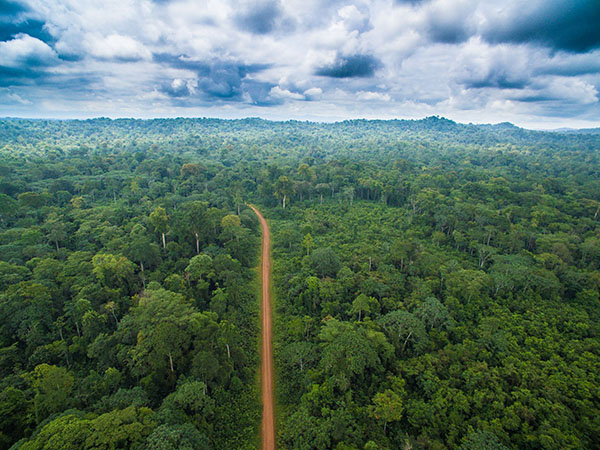What is Hongmu?
Meaning red wood in Chinese, the term Hongmu refers to a range of richly hued durable tropical hardwoods used to produce high-end reproduction furniture, flooring and handicrafts.
Recent Trends
In recent years, China’s growing middle class has driven up demand, resulting in the sector reaching industrial scales. Rapid growth has created a poorly structured market with little regulation. Demand for hongmu in China has grown exponentially over the past 15 years.
Although Hongmu products appear to celebrate cultural heritage, mass production of antique reproductions with rare species is in danger of hijacking this tradition. One of the biggest drivers of demand since 2009 has been market speculation as Hongmu is widely sold as a sound investment opportunity, supported by rising demand and a diminishing supply.
Various levels of the Chinese Government have encouraged and endorsed the expansion of the Hongmu industry to generate employment, tax revenues, and wider economic growth. In 2015, State officials witnessed a Hongmu trading centre being set up under the China Forestry Exchange.
Are Hongmu Species Protected?
China's National Hongmu Standard identifies 33 species across the Pterocarpus, Diospyros, Dalbergia, Millettia and Cassia genera as recognised Hongmu species. Only 8 out of 33 Hongmu species are protected under CITES.
How bad is it?
During the first half of 2016, China imported on average 350 hongmu logs per hour
Hongmu log imports into China have increased by 1300% from 2009 to 2014
China’s hongmu industry is composed of 30000 companies
The generated domestic retail revenues are over 25 billion USD
Demand and Transit Countries
Because most hongmu species are not protected under CITES, and because the main demand side country, China, and key trade and processing hub Vietnam, do not prohibit the import of illegally harvested and/or traded timber, illegal wood from these species is legally placed in the markets there everyday.
Source Countries
The expanding hongmu trade has driven successive boom and bust cycles, characterized by steep rises in harvest and export volumes from individual countries before a sudden collapse, or “bust.” The fall corresponds to the rapid relocation of trading networks from one country to the next, following the exhaustion of the species, discovery of a new supply, or to avoid new control measures put in place by besieged governments.
Traditionally, Southeast Asia and India were the main sources, but in recent years Africa and to some degree Latin America have become increasingly important sources. Nearly half of the world's countries, 88 in total, across five continents have been targeted by traders since 2000.
Crime
Crime is a glaring characteristic of the global Hongmu trade. The trade is marked by unsustainable harvest, multiple legal violations including theft, smuggling and corruption, and violence in source countries.
The increasing value of the limited key species targeted has attracted criminal syndicates, illegal loggers and corrupt officials alike. Since the sector boomed in 2009/10, a wave of hot investment capital has driven a surge of systematic illegal harvesting and timber smuggling in source countries throughout Asia, Africa and Latin America.
Africa
Hongmu exports from West Africa have grown more than 1,000 fold between 2010 and 2015. West Africa is now the world's leading hongmu-producing region by volume.
Sequence through the years to see the change in import volume between 2009 and 2017 from West African countries.
Regional Negative Impacts: Rebel Activities
The main species is Pterocarpus erinaceus, known as Kosso, found in the dry forests of West Africa, where the unsustainable harvest increases the risk of desertification.
In West Africa, Hongmu species are increasingly known as blood timbers due to connections between illegal Hongmu trade and rebel uprisings. For example, in Senegal's Casamance region, the rosewood trade has fueled rebel activities through the smuggling of Kosso to neighboring Gambia.
Asia
Asia is the epicentre of the global Hongmu trade. It incorporates the two main demand countries and contains nearly two-thirds of the species identified in China’s Hongmu Standard
With the commercial extinction of Huang Hua Li Dalbergia odorifera in China and heavy restrictions placed on the harvest and export of CITES-listed Red Sandalwood Pterocarpus santialinus in India, Siamese Rosewood Dalbergia cochinchinensis became the most sought-after hongmu species globally. Siamese Rosewood was belatedly listed on Appendix II in 2013 and is virtually commercially extinct, but extensive smuggling continues.
Sequence through the years to see the change in import volume between 2009 and 2017 from Southeast Asian countries.
Regional Negative Impacts: Extinction
Despite being traditionally considered one of the lower quality Hongmu species, padauk, Pterocarpus macrocarpus, now comprises a significant proportion of the global Hongmu trade by volume, with Laos and Myanmar the biggest source countries. In 2014, an estimated 781400 m3 of Pterocarpus macrocarpus logs, and 229796 m3 of Dalbergia oliveri logs were traded internationally, the vast majority ultimately going to China. Efforts to protect these two species through CITES have not yet born fruit. In light of pressures from trade and the distribution data available, commercial extinction of Burmese padauk and Burmese rosewood is an imminent threat across the region.
Latin America
Although the reported volume from Central America is relatively small, the region has Dalbergia species with very limited distributions that are particularly vulnerable to commercial extinction.
Sequence through the years to see the change in import volume between 2009 and 2017 from Central American countries.
Regional Negative Impacts: Corruption
Since the CITES listings of the five regional species and major crackdowns, the “Chinese controlled wood mafia” have diversified their smuggling routes, targeting the remaining natural populations located in protected areas. Cocaine traffickers affected by declining revenues have been attracted by the high returns and money laundering opportunities that rosewood trade offers. Misdeclarations of CITES listed hongmu as non-listed lookalike species, forgery of export permits and the collaboration of corrupt officials have multiplied in recent months in Guatemala. All known shipments were destined for China or Hong Kong.
A Threat To Fragile Ecosystems
Extinction
Myanmar provides a startling example – based on estimates of standing stocks for Pterocarpus macrocarpus and Dalbergia oliveri and current trade levels, both species are predicted to become commercially extinct within the next three to 13 years.
Desertification
Overexploitation for the Hongmu trade is being keenly felt throughout west Africa too, where the harvesting of Pterocarpus erinaceus from vulnerable savannah ecosystems is increasing the risk of desertification, and depriving local communities of a resource traditionally used for fuel, construction, musical instruments, traditional medicine and animal fodder.
Habitat Degradation
The rosewood trade is directly degrading Madagascar’s unique tropical forest ecosystems. Despite logging bans, a complete embargo on exports and CITES listings, illegal logging and smuggling of Dalbergia and Diospyros trees is causing broader ecosystems disturbances in Madagascar. Logging gangs often poach endangered wildlife, including the island’s famous lemurs, for either subsistence while in the forest or sale in wildlife markets. For every rosewood log harvested, numerous lighter weight trees are used to float log rafts out of the forest.




